Understanding The Harmonious Oscillator Inside The Rudis Sylva RS16
Watchmaking off the beaten track is why we love indies.
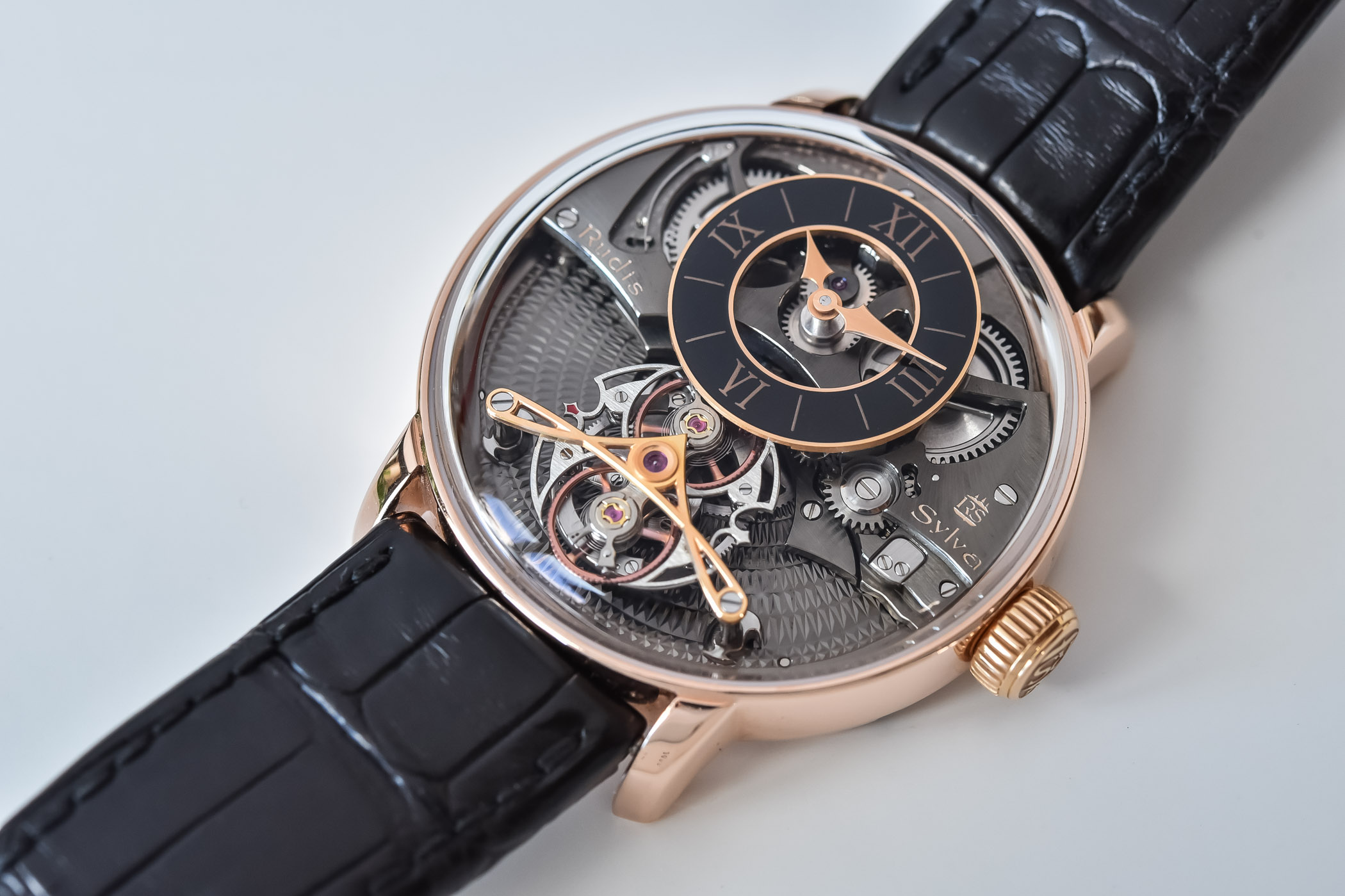
There are multiple reasons why we, at MONOCHROME, have long focussed on independent watchmaking. It comes down to the concepts of ingenuity, creativity, boldness, a certain perception of things. An audacity in design, finishing or technical solutions that you won’t find in the portfolio of mainstream brands. Indies have a propensity to look at things from a different angle, and to infuse soul into their creations. Today we’ll take a closer look at a watch made by Swiss indie brand Rudis Sylva, and mostly at the Harmonious Oscillator beating inside its case. A unique, original and fairly complex solution that aims at counteracting the effect of gravity. Surely, the tourbillon does it too… Well, the Rudis Sylva RS16 tries to find a different angle to solve that problem.
Assumption: watches are affected by gravity
The beating heart of a mechanical watch, its regulating organ, is affected by multiple external factors. This includes, but not only, phenomenons such as temperature (which was solved thanks to bi-metallic balances), magnetism (a modern issue, solved thanks to amagnetic materials such as silicon), friction (solved partially by the use of lubricants, or more recently lubricant-free materials), shocks (solved thanks to antishock devices) and, as for today’s matter, gravity.
Gravity, a fundamental force, does have a negative effect on the most crucial parts of a mechanical watch. It does create attraction on the regulating organ (composed of the escapement, the hairspring and the balance), which is responsible for the accuracy of a movement. As we explained in this video, early watches were worn in the pocket, thus most of the time positioned vertically. Much different from today’s wristwatches, which are in a different position all the time. Thus, pocket watches being in a constant position, the gravitational force pulled the light and fragile hairspring from the same side (towards the centre of the Earth…) and thus directly affecting the precision of the movement.

The first anti-gravity device invented was the tourbillon, according to a patent filed by Abraham-Louis Breguet on 26 June 1801. Breguet’s idea was to install the escapement inside a mobile carriage that performed a complete rotation every one- to four-minute, making sure that the regulating organ of the watch was in constant motion, thus not affected anymore by gravity – in short, the errors of one position were compensated by the errors of other positions.
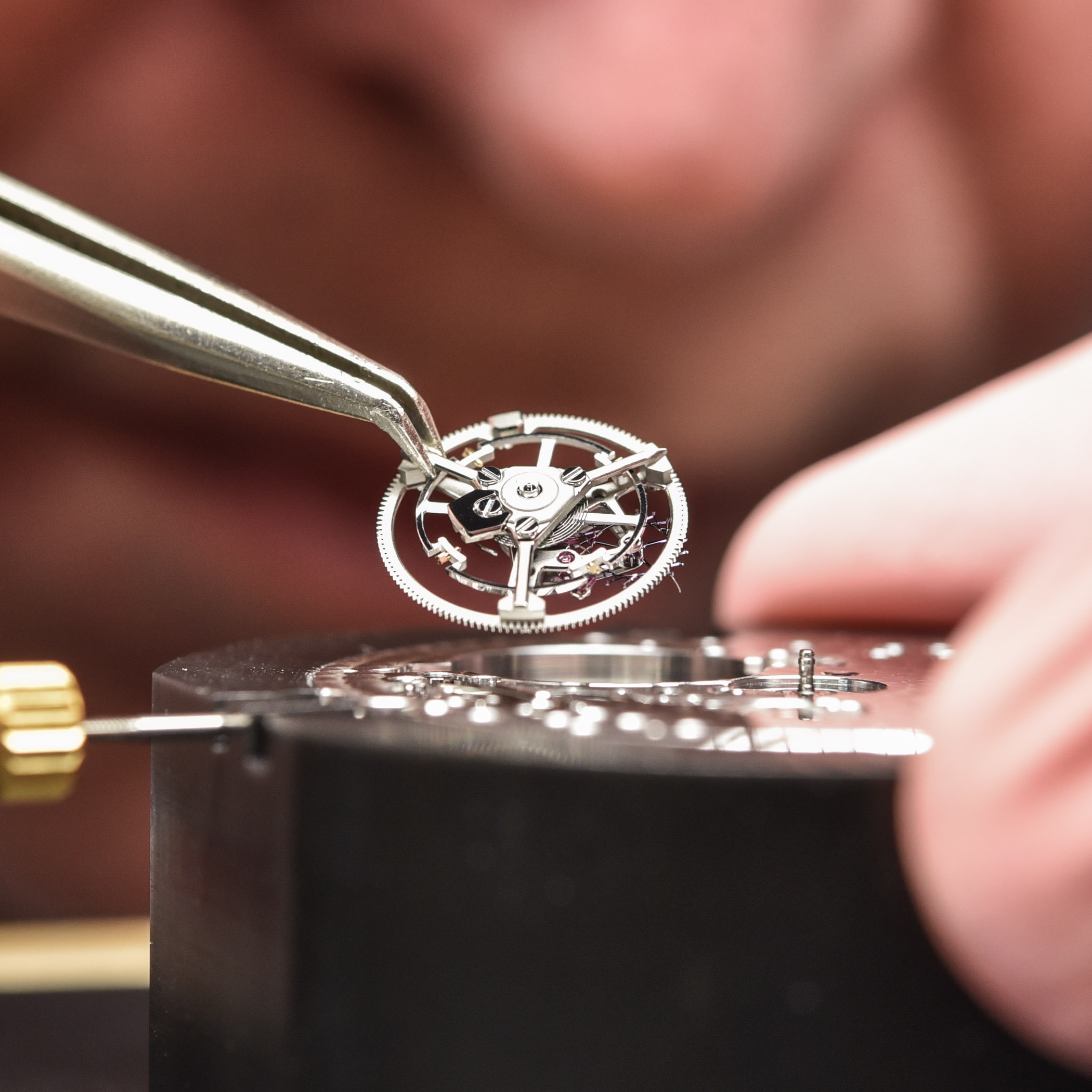
Since then, the tourbillon has become a true hallmark of high-end watchmaking, and if its use in a wristwatch remains somehow questionable, it is nevertheless a demonstration of horological savoir-faire. However, the tourbillon is one solution. And watchmakers have since decided to tackle the issue of gravity with a fresh mind, looking at the problem from a different perspective. Some have improved the concept of the tourbillon by creating multiple-axis carriage. Some, like Rudis Sylva, have decided to create their own oscillator.
Enters the Harmonious Oscillator
As we just mentioned, the tourbillon requires a complete revolution to negate the effect of gravity – one error is compensated by the upcoming errors. As explained by Rudis Sylva, the difference between the tourbillon and the Harmonious Oscillator lies in the instantaneous correction offered by this complex solution. “The Harmonious Oscillator enables instantaneous time correction in a vertical position by means of the interconnection of the balances and asymmetric deployment of the balance springs. So it is never influenced by the Earth’s gravity,” explains the brand.
The construction is fairly complex. The Harmonious Oscillator is not a double tourbillon, where you usually have two independent regulators connected by a differential, which averages the rates. The Harmonious Oscillator is not a double regulator working on the concept of resonance – such as F.P. Journe with its Chronomètre à Résonance using the concept of resonance through a small volume of air, or Armin Strom with the Mirrored Force Resonance where the two oscillators are connected by a steel resonance clutch spring. Here, the balances are mechanically interlinked, and if there are two oscillators, there’s only one escapement. The Harmonious Oscillator is fairly unique in its architecture.
The Harmonious Oscillator was a concept developed by Romain Gillet and developed by Finnish watchmaker Mika Rassinen. The main point of this unusual oscillator is to use two complete toothed balance wheels that are interlinked, yet with a single escapement, all of that then housed in a cage that rotates once per minute. Yes, you read correctly (and sorry if it’s not truly visible on our images, due to the time of exposure) the balances have teeth on their rims. And these are connected, touching one another and, rotating in opposite directions.
To be even more precise, one balance is driven by a single escapement which provides the impulse to then drive the other balance wheel – the latter doesn’t feature an escapement. These balances rotate in opposite directions and each hairspring breathes in an opposite way, meaning that when one contracts, the other one expands. Thus, the symmetry and energy of the balance springs are constantly opposed, enabling instantaneous average correction in the vertical position, which eliminates the effect of gravity. In this instance, the errors of one of the hairsprings are cancelled immediately, thanks to the other hairspring/balance that averages the rate variations. Of course, in theory.
Finally, this complex duo of balances is housed in a carrousel rotating once per minute, thus adding to the anti-gravity effect of the whole system. This mechanism ensures the same amplitude for both regulators thanks to their mechanical connection, and the permanent opposition of the balance springs negates the effect of gravity in an instantaneous way. According to the brand, “tests performed on various measuring instruments give exceptional results, in particular with regard to amplitude in all positions.” Something that we’d definitely like to test ourselves, to see the effect of this complex architecture. The brand also claims to have very low delta amplitude (the difference in amplitude upon position changes).
The Rudis Sylva RS16
Well, this watch is not all about the Harmonious Oscillator. There’s indeed a movement and a timepiece around it. And both are pretty impressive too, in all senses of the word. The Rudis Sylva RS16 is quite an imposing watch, size-wise but also visually. And it also impresses when it comes to the decoration techniques.
Powering the Harmonious Oscillator is a large (like, really large) hand-wound movement filling almost entirely the case, with a 39.55mm diameter – the movement, not the watch. Surely, its design and shape have been almost entirely focused on the oscillator, understandably as it’s the star of the show. This manual movement relies on two barrels for 70 hours of power reserve, both positioned on the upper side of the watch, and the whole assembly runs at a 3Hz frequency (or 21,600 vibrations/hour). In terms of functions, it remains a pretty simple time-only watch – but a truly over-engineered time-only watch.
What needs to be pointed too is the level of decoration. Most parts are hand-made and hand-finished with traditional techniques. The main plate has a pyramid guilloche pattern in the lower part, and classic circular graining in the upper part. All edges are finished with polished bevels and straight graining, the barrel drums are snailed, the gear train is circular-grained with bevelled spokes on the wheels and diamond-polished corners. The most impressive parts are, without a doubt, the titanium carriage holding the two balanced and the upper bridge. Both are finished with multiple inward angles (28 to be precise on the titanium cage), and both with complex designs. The upper bridge, in this instance, is particularly impressive in shape and decoration.
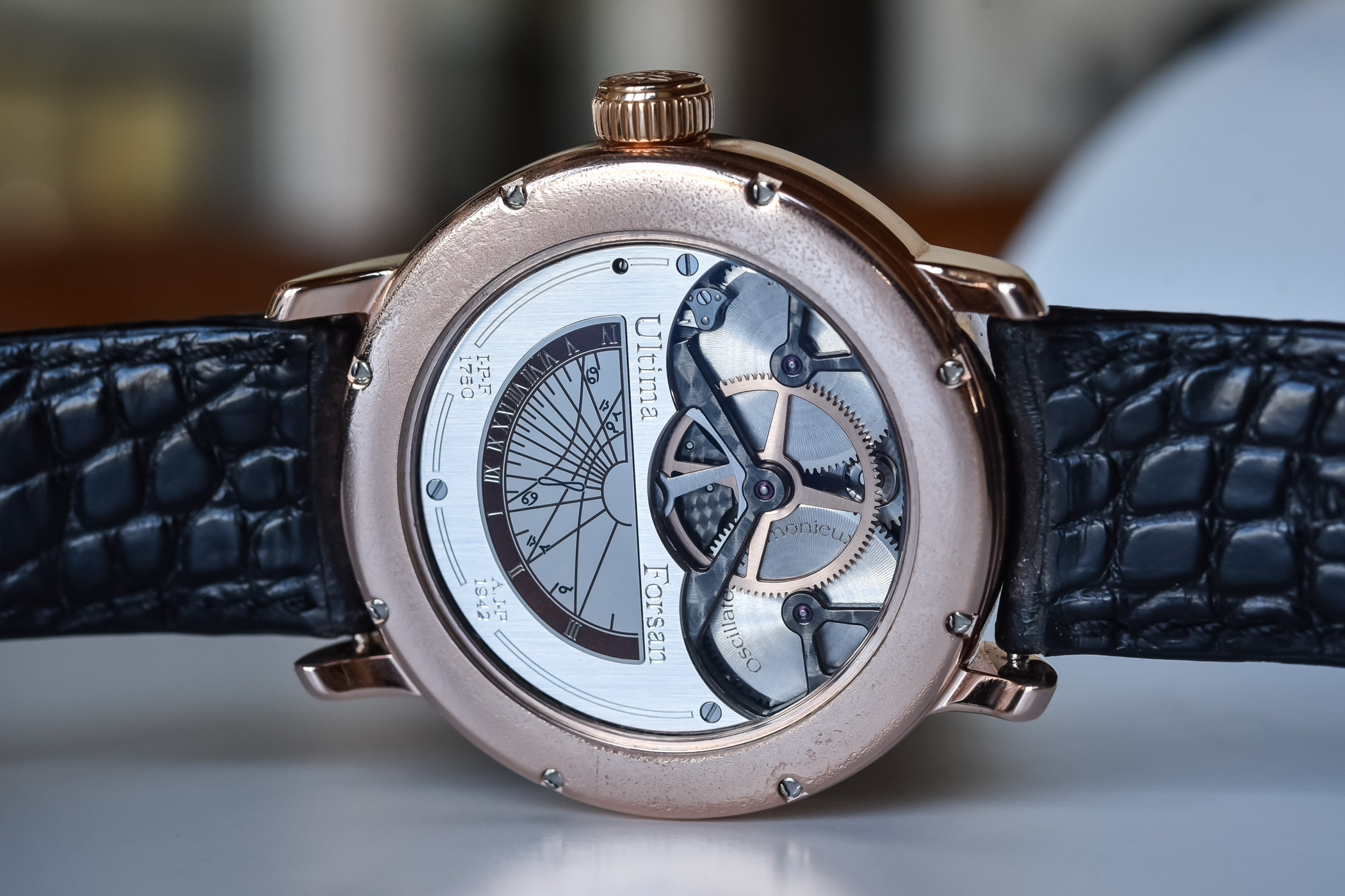
The back of the watch reveals a simpler design (most of the technical elements are positioned dial side). The most notable element is an engraved sundial with grand feu enamel. The case, designed by Eric Giroud, measures 44mm in diameter and is fully polished. It’s topped by an ultra-domed sapphire crystal offering an unimpeded view of the mechanics and is available in 18k rose gold (like presented here) but also in white gold or titanium with DLC coating. The sub-dial for the hours/minutes is here combining black and gold, obtained with an enamel process. Time is read with hand-made gold hands, with drawing on the 2 faces and bevelling on the flanks. The whole watch feels technical and traditional at the same time, an interesting mix that emphasizes the complication onboard.
All in all, the Rudis Sylva RS16 with Harmonious Oscillator is an impressive watch, technically and visually. The oscillator is the star of the show and deserves to be seen in the metal. Its ballet is rather mesmerizing. As you’d expect, this doesn’t come cheap and the watch is priced at around CHF 250,000 before taxes. For more details, please visit www.rudissylva.ch.

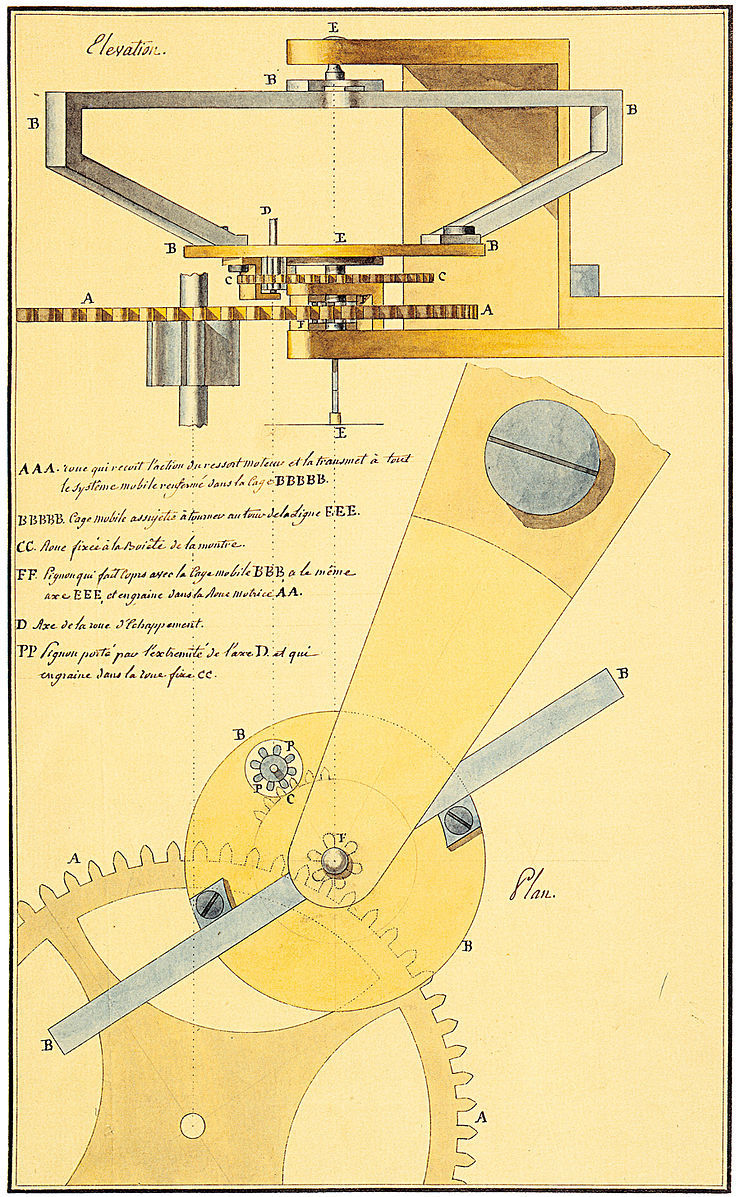


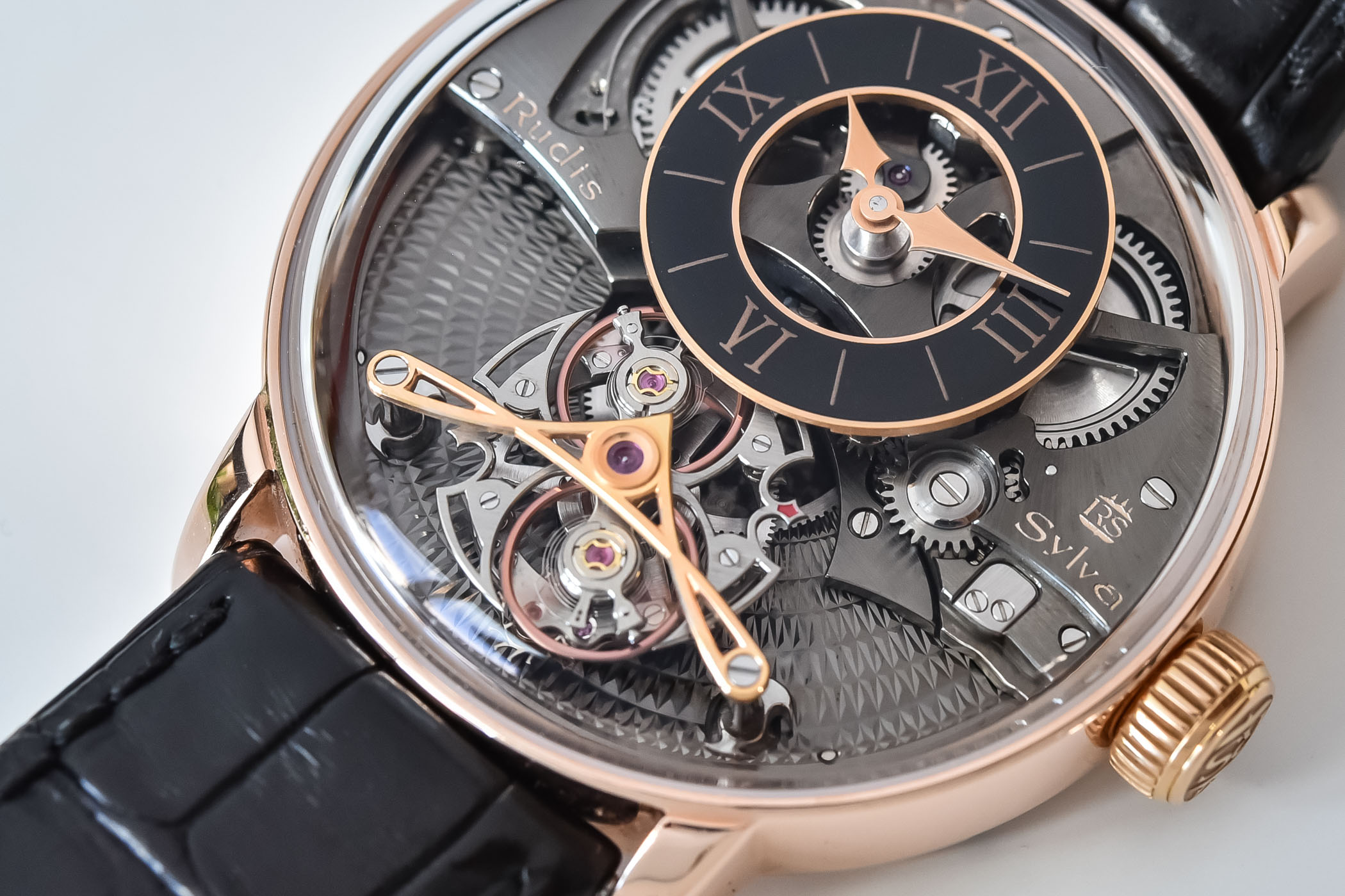
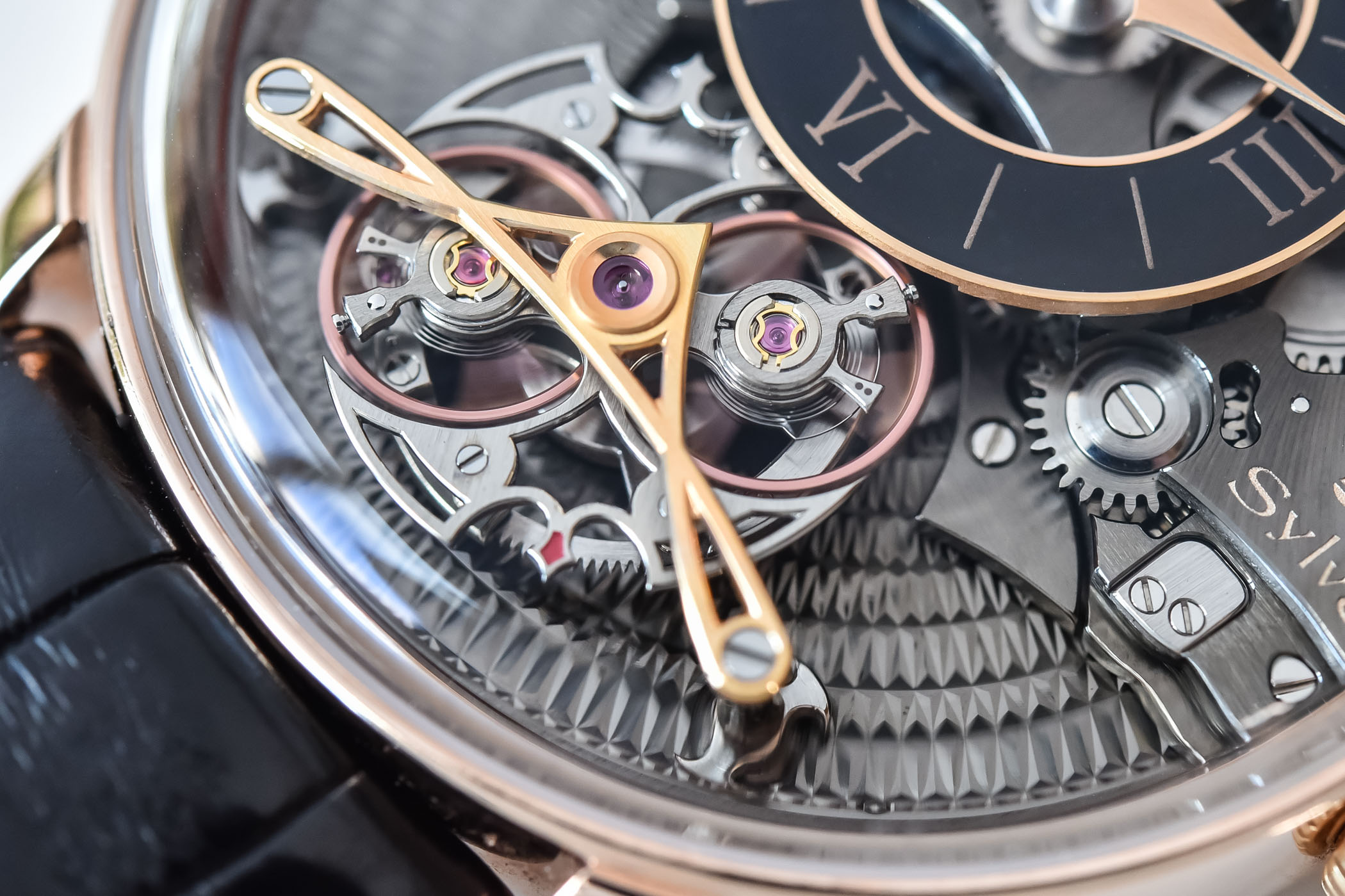
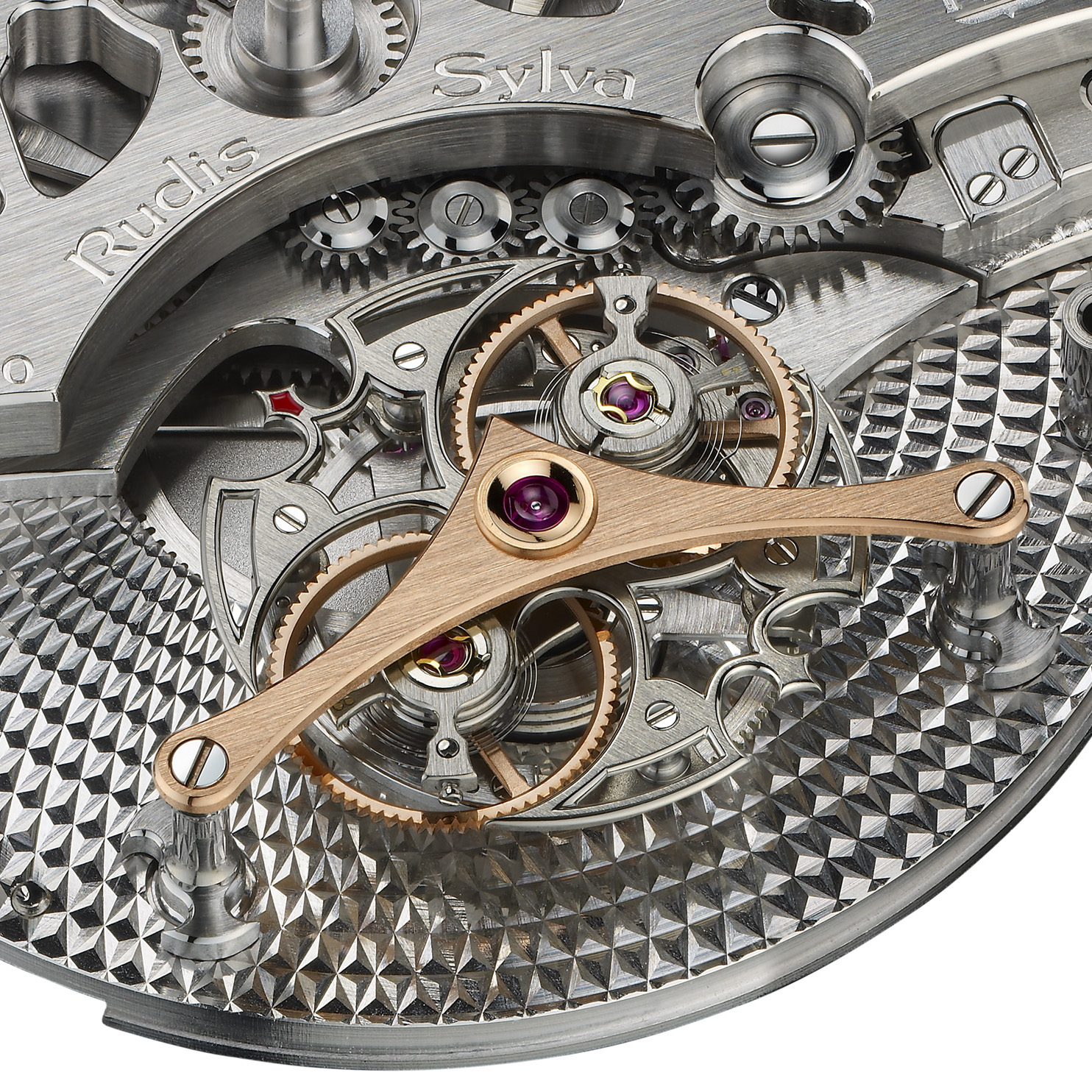

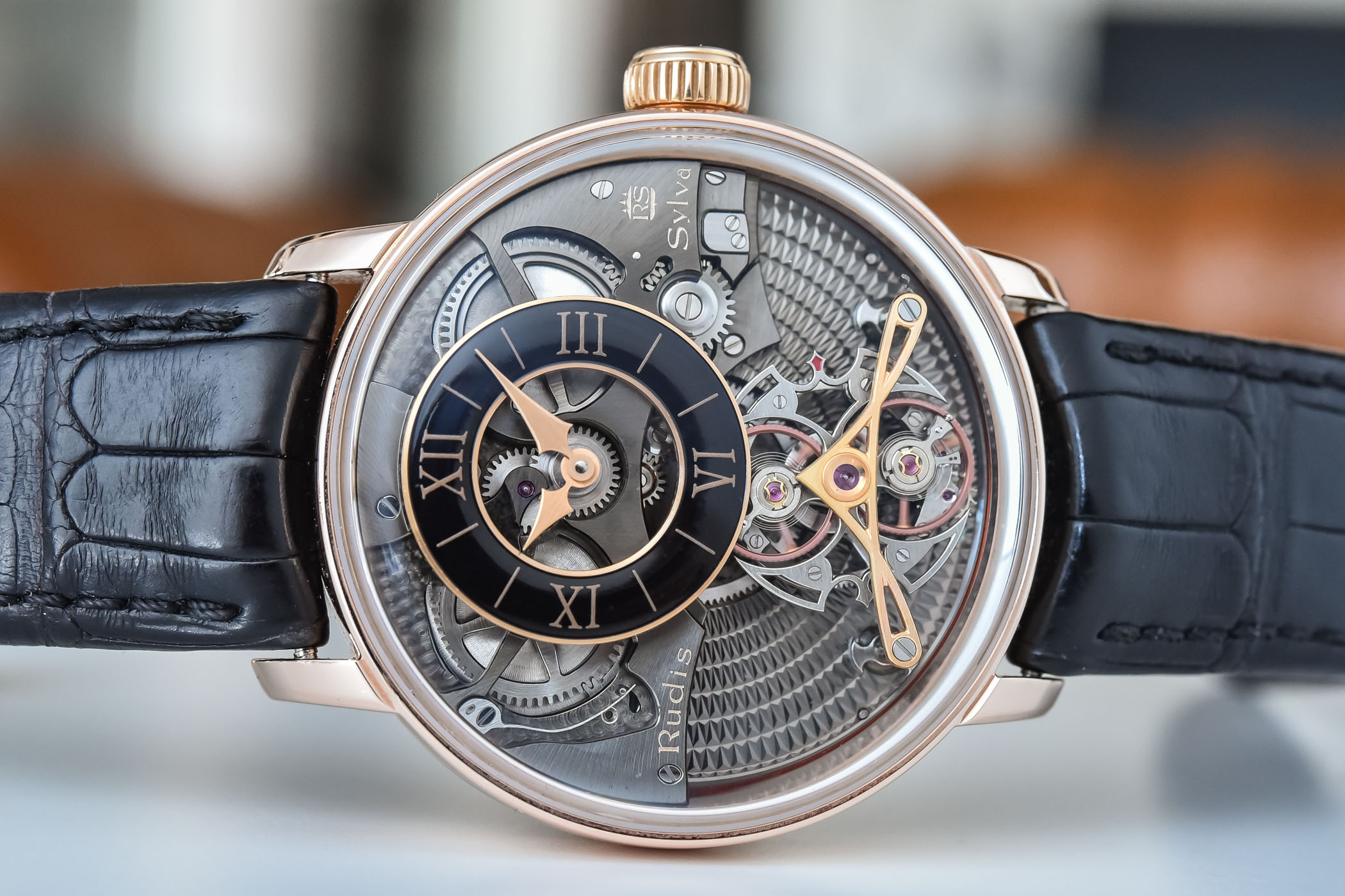
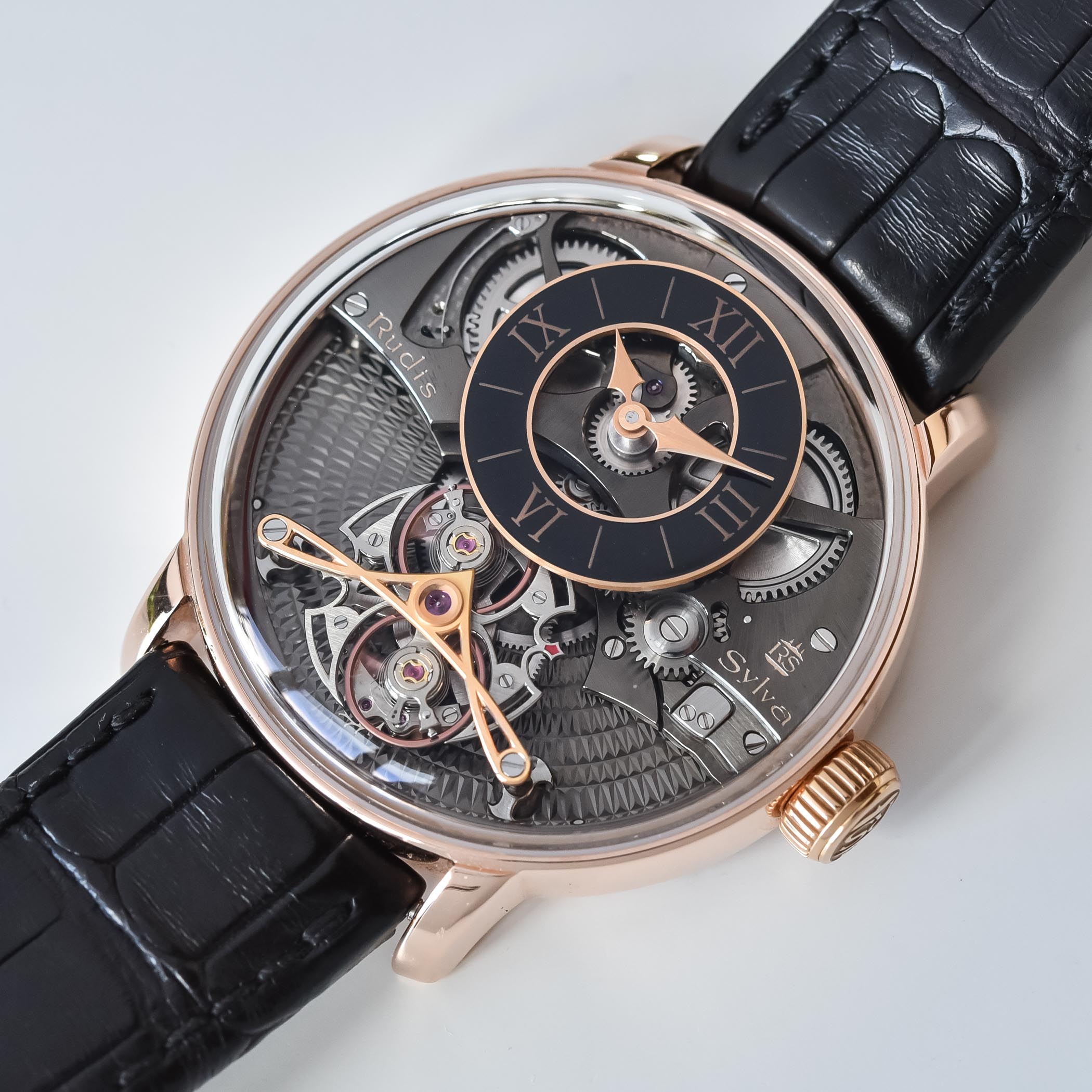
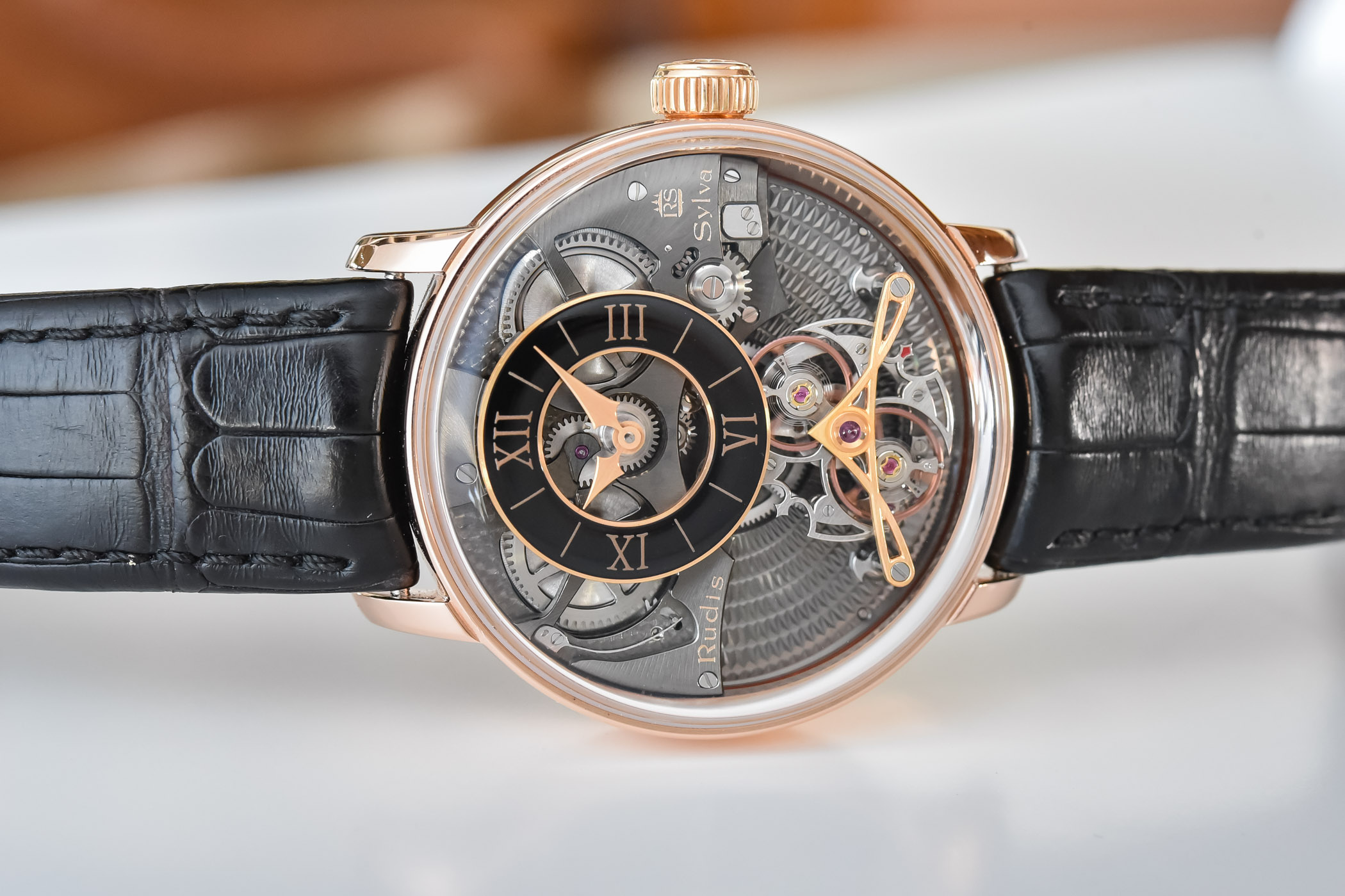
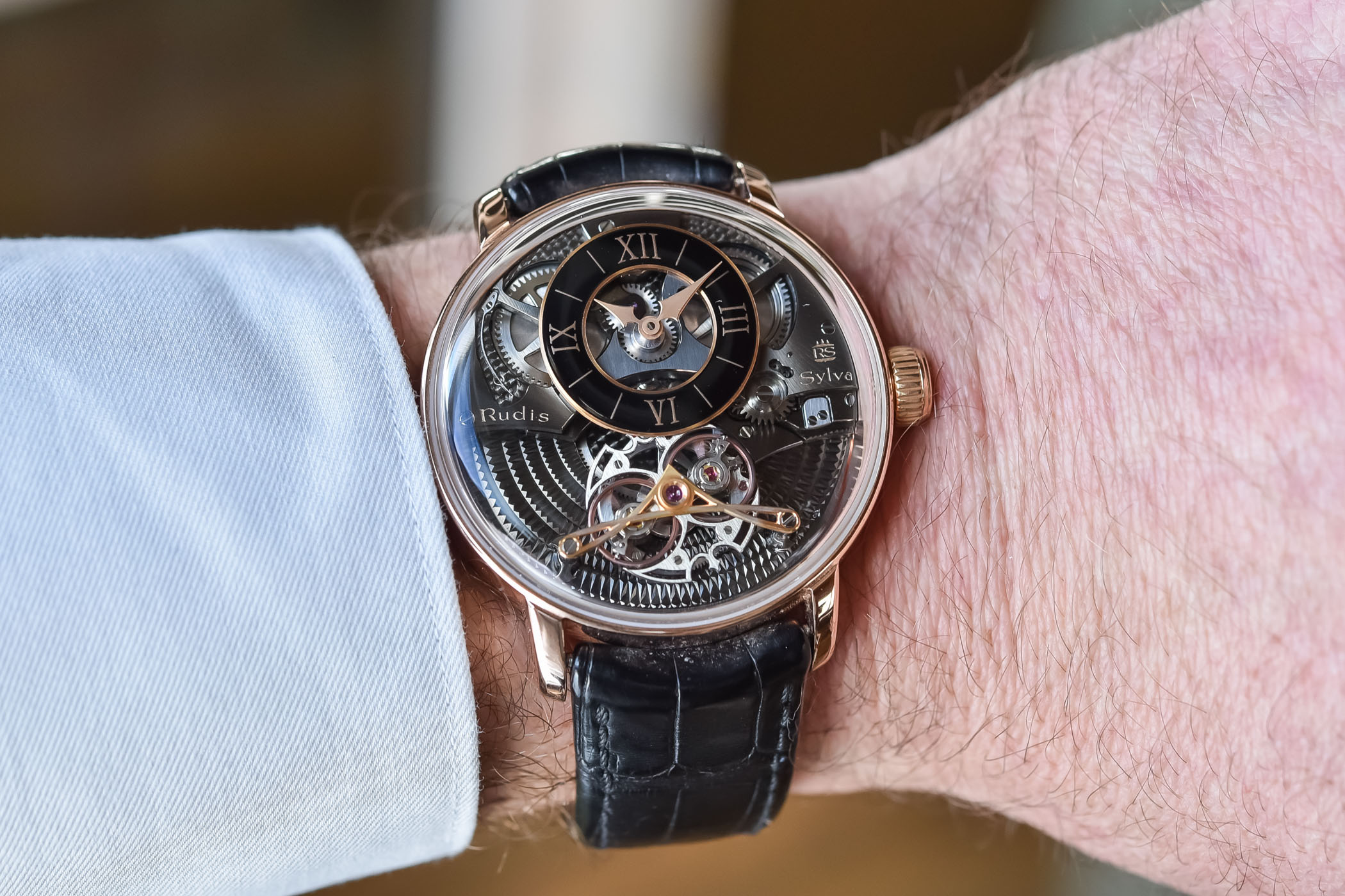



2 responses
Como prototipo experimental es innovador y curioso. Ya para reloj de uso diario me parece muy endeble. Los dos volantes batiendo a 3 Hz con el engranaje dentado por el medio, debe crear un desgaste acelerado que invalidará el mecanismo en corto tiempo. No es un lugar adecuado para añadir dientes rozando a esa frecuencia.
Interesting, as the the two balances are connected directly with teeth yet each has it’s own regulator it must be difficult to set up. Performance figures would be useful to know. Not exactly an attractive watch